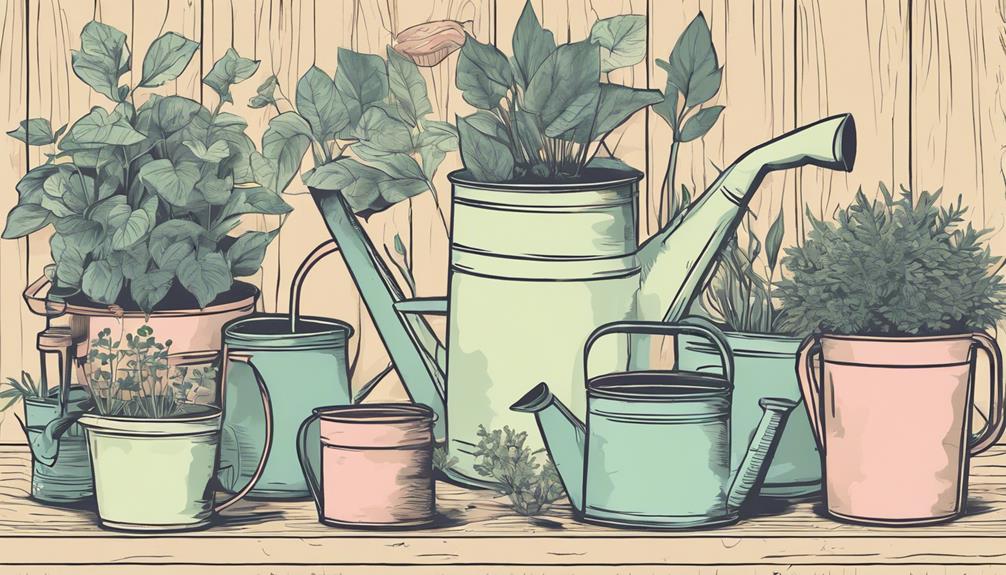See All: Backyard Farming
Free Backyard Farming Webinar…
You can grow food! This free webinar is for people who want the fastest and easiest ways to produce healthy and delicious vegetables, eggs, and meat. Because you know that growing your own food is like printing your own money…
Click Here To Watch The Free Webinar Now!
“I recently started a backyard farm with a variety of vegetables and a few fruit trees. I’m really struggling with watering them properly—either I water too much or too little. I’m unsure how to calculate their exact water needs. Any advice on how to determine the right amount of water for my plants?” Thanks, Samantha, Austin, USA.
How Do I Calculate Water Needs For My Plants?
It’s wonderful to hear about your backyard farm, Samantha! When it comes to watering plants, striking the right balance can indeed be tricky. Many factors influence water needs including plant type, soil quality, and weather conditions. Let’s break it down step-by-step to make it easier for you.
Understanding the Basics
Plants need water for photosynthesis, nutrient transportation, and maintaining turgidity (which helps them stay upright). Too much or too little water can stress them out, leading to decreased health or even death.
Factors Affecting Water Needs
Here are some key factors to consider when determining water needs:
- Plant Type: Different plants have different water requirements. For instance, vegetables like tomatoes and cucumbers need more water compared to drought-tolerant herbs like rosemary and thyme.
- Soil Type: Sandy soils drain quickly and may require more frequent watering, while clay soils retain moisture for longer periods.
- Climate and Weather: Hot, dry weather calls for more frequent watering compared to cooler, rainy conditions.
- Plant Age and Size: Younger plants and seedlings generally need more frequent watering than established ones. Large, mature plants also take up more water than smaller ones.
- Season: During the growing season, plants require more water compared to their dormant period.
Measuring Soil Moisture
One of the best ways to determine if your plants need water is by checking the soil moisture. Here’s how:
- Finger Test: Stick your finger about an inch or two into the soil. If it feels dry at this depth, it’s time to water.
- Soil Moisture Meter: These handy devices give you an instant reading of soil moisture levels and can be very accurate.
Use these methods regularly to gauge soil moisture and adjust your watering accordingly.
Calculating Water Needs
Calculating the exact amount of water can be done based on the type of plants you have and their specific needs. Here’s a general guideline:
- Find Plant-Specific Requirements: Research the water needs of each plant species in your garden. For instance, leafy vegetables may need about 1-1.5 inches of water per week.
- Convert to Volume: Calculate how much water this translates to for your garden area. One inch of water over a square foot equals about 0.623 gallons.
- Adjust for Weather: Increase the amount by about 50% during hot weather and reduce it during cool, rainy periods.
For a practical example, if you have a 10 square foot garden and you need to provide 1 inch of water per week, you would need about 6.23 gallons of water weekly (0.623 gallons x 10 square feet).
Using Mulch
Mulching helps in maintaining soil moisture by reducing evaporation. It keeps the soil cool and prevents water runoff. Using organic mulch like straw, wood chips, or compost is highly beneficial.
Implementing a Watering Schedule
Maintaining consistency is key. Create a watering schedule based on your plants’ needs, soil moisture checks, and local weather conditions. Early morning watering is usually best as it reduces evaporation and allows plants to hydrate before the heat of the day.
Watering Techniques
Various watering techniques can help you use water more efficiently:
- Drip Irrigation: Provides water directly to the base of the plant, reducing waste.
- Soaker Hoses: Deliver water slowly and evenly, allowing deep soil penetration.
- Hand Watering: Allows control over the amount of water each plant receives.
Avoiding Common Mistakes
Beware of these common watering mistakes:
- Overwatering: Can lead to root rot and attract pests.
- Underwatering: Stress plants and stunt their growth.
- Watering Leaves: Can promote fungal diseases; it’s better to water at the base of the plant.
Monitoring and Adjusting
Keep an eye on your plants and adjust your watering routine as needed. Signs of overwatering include yellowing leaves and mold, while under-watering shows up as wilting and dry, brittle leaves.
Final Thoughts…
Samantha, understanding your plants’ water needs is all about balance and observation. Remember to check the soil moisture regularly, consider the specific needs of each plant, and adjust based on weather conditions. Happy gardening and thank you for your question!
Return To: Backyard Farming
Free Backyard Farming Webinar…
Marjory Wildcraft: For 20+ years, Marjory has been a leader in survival & preparedness and wants to show you how to grow food in your backyard farm. This free webinar is for people who want the fastest and easiest ways to produce healthy and delicious vegetables, eggs, and meat. Because you know that growing your own food is like printing your own money…

